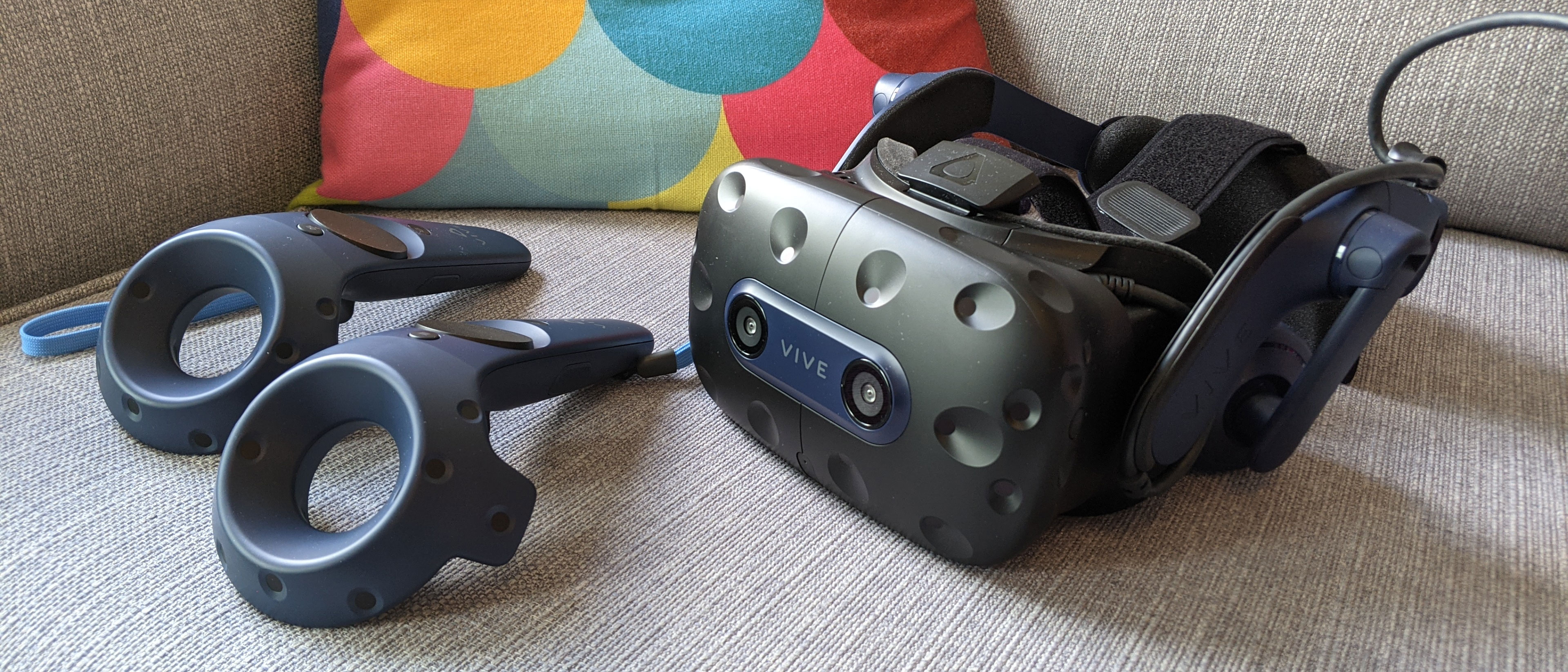TechRadar Verdict
The HTC Vive Pro 2’s super-high resolution screen is a sight to behold, and represents the future of immersive VR. But the virtual reality headset’s outside-in tracking system and oversized controllers are starting to feel behind the curve.
Pros
- +
Incredible screen
- +
Excellent audio
- +
Versatile accessories
Cons
- -
Heat issues from screen
- -
Ageing controllers
- -
Tracking setup
Why you can trust TechRadar
Two minute review
Looking for a high-spec VR headset? The HTC Vive Pro 2 will whisk you off to super-hi-res virtual reality worlds with its 5K display, which is simply the best VR screen available to the average person today. But that incredible screen is paired with some other hardware elements that need to be considered caveats to the otherwise premium experience.
The original HTC Vive put at-home virtual reality on the map, with its spot-on tracking and high resolution screen. The competition has heated up since its 2016 debut, with the Oculus Quest 2 and Valve Index impressing VR gamers. But with the HTC Vive Pro 2, HTC is ready to re-stake its claim as the premium VR headset manufacturer to beat when it comes to PC virtual reality. And, in terms of its spec sheet, the HTC Vive Pro 2 is easily one of the most powerful, high-end VR headsets out there.
With a 5K (2.5K to each eye) display targeting a silky-smooth 120Hz refresh rate, it’s the most visually impressive VR headset we’ve ever put on our heads. It’s also one of the richest sounding, thanks to its over-ear headphones and hi-res audio capabilities.
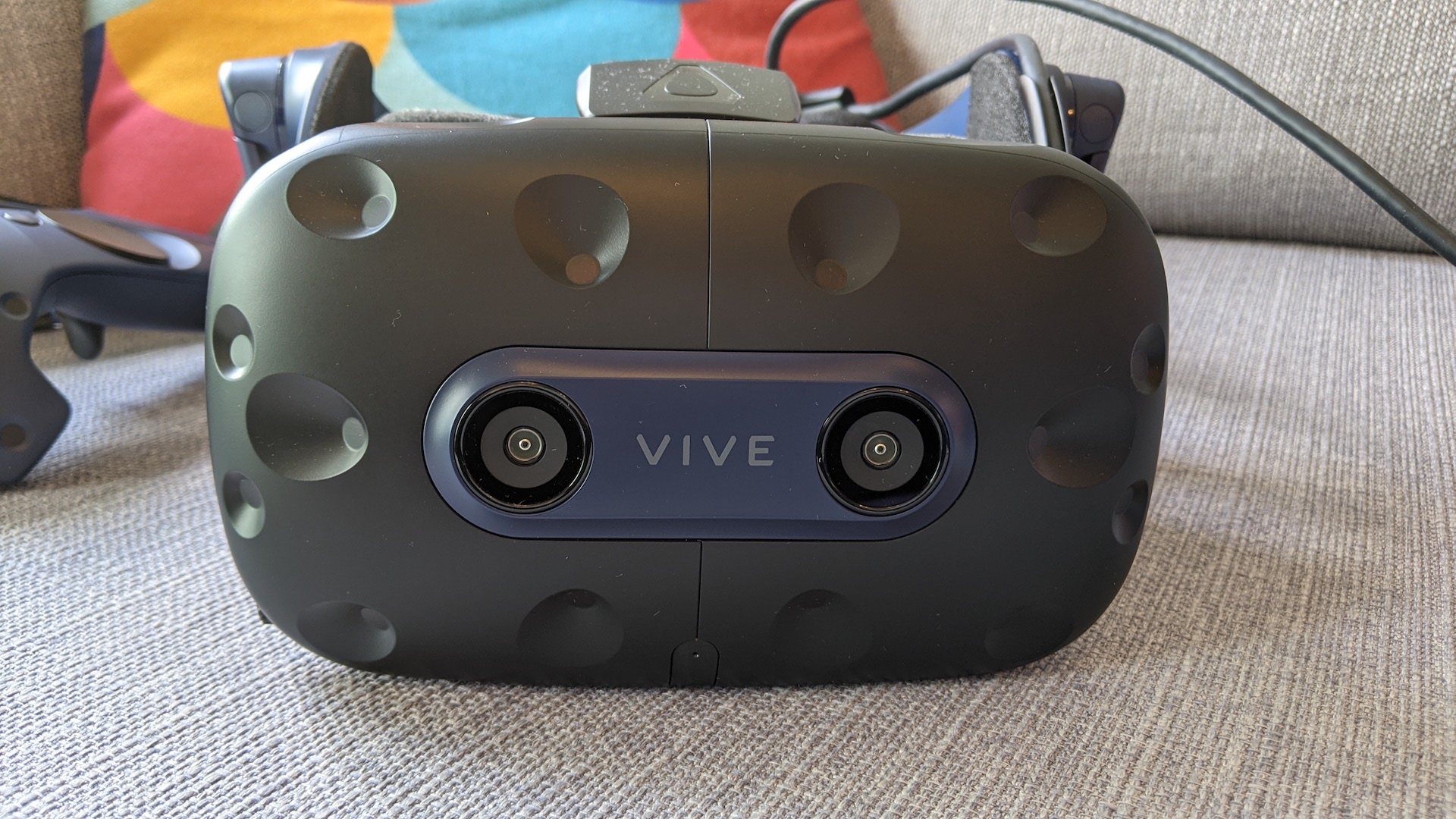
But it’s not the most comfortable – HTC has done well to make the Vive Pro 2 easily adjustable to fit many head shapes and glasses-wearers, but there’s still a lot of weight to the headset, and a lot of bulk to the design, not to mention the restrictions naturally brought on by its tethered-to-a-computer nature. Also, that high resolution screen generates a lot of heat – so much so that we struggled to play without fogging the lenses up very quickly.
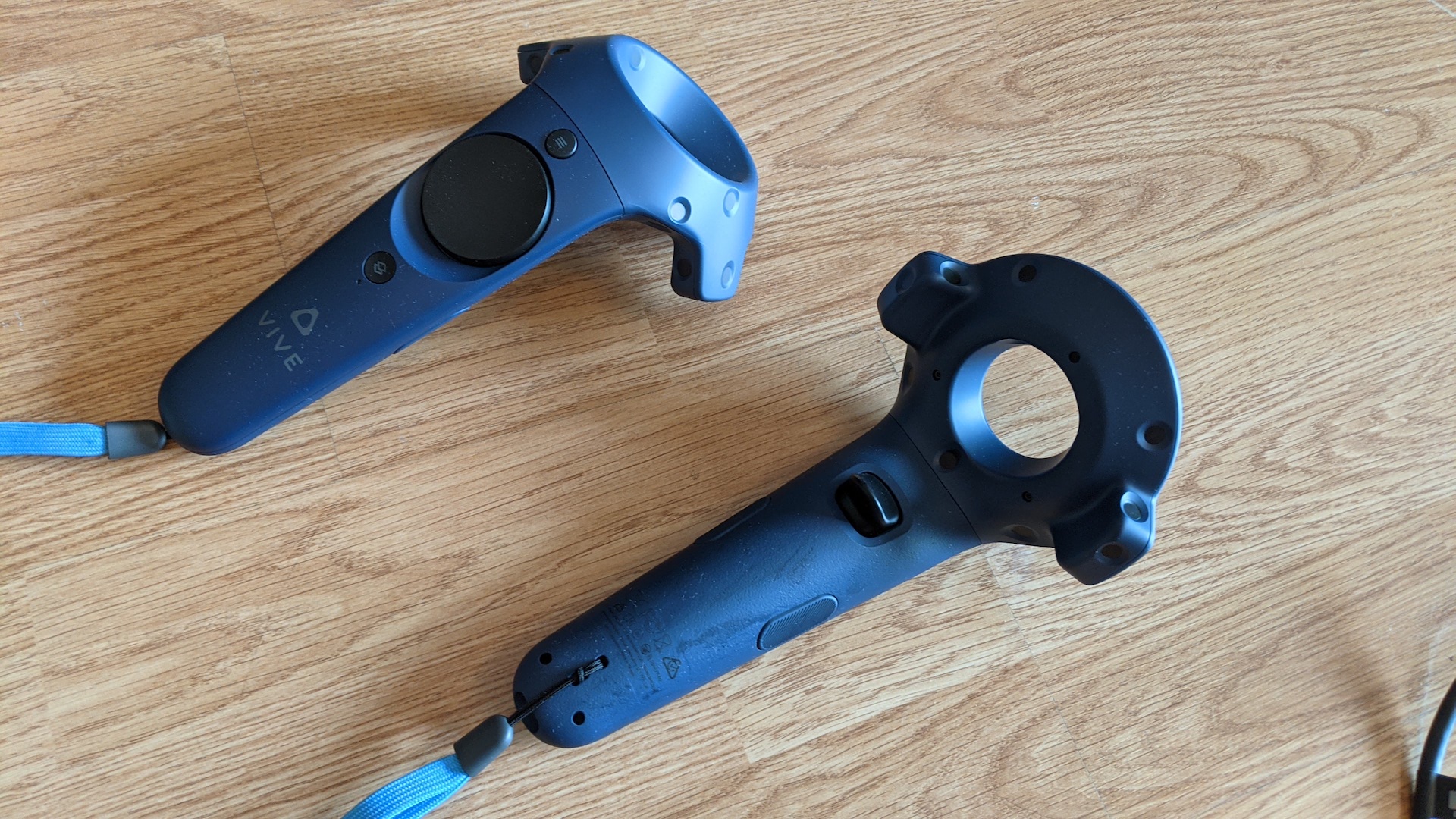
The HTC Vive Pro 2 is also still using an outside-in tracking system. In the right environment, it’s a very accurate method of spotting the player in the VR world, but it does lead to a more complicated set up procedure, requires more cabling and wall outlets, and limits the locations where play is feasible. Finally, the wand-like controller design of the Vive family is starting to show its age – large and weighty, the trackpad design may be better suited to commercial applications, but often now feels at odds with the control schemes that current VR titles lean towards, which usually now favour the presence of traditional control sticks, alongside motion movements.
There are caveats, then. But this headset still comes highly recommended and is one of the best VR headsets around – that screen is going to blow the minds of VR gamers that have only experienced virtual reality hardware of a generation or two ago. If HTC can address the other parts of the package, it’ll regain its position as the best-in-class VR manufacturer.
HTC Vive Pro 2 price and availability
- Two bundle options available
- Premium tech at a premium price
- Existing Vive owners can save on buying accessories again
Pre-orders for the HTC Vive Pro 2 are open now, with general sale starting June 4, 2021. The headset-only variant will start at a special discounted price of £659 / $749 / €739. The full kit, which includes Base Station 2.0 and VIVE Controllers, is available from 4 June, for £1299 / $1399 / €1399.
This is definitely a premium-priced VR device, similarly positioned as the Valve Index, and considerably more than the Oculus Quest 2 (which has lesser specs to match its lower price). Keep in mind you’ll also need a high-end PC to see the HTC Vive Pro 2 working at its best.
Some money-saving can be achieved thanks to the fact existing HTC Vive accessories can be paired with the Vive Pro 2, including tracking stations and earlier generation controllers. But you’ll need to stump up a good chunk of change if you’re a VR newcomer.
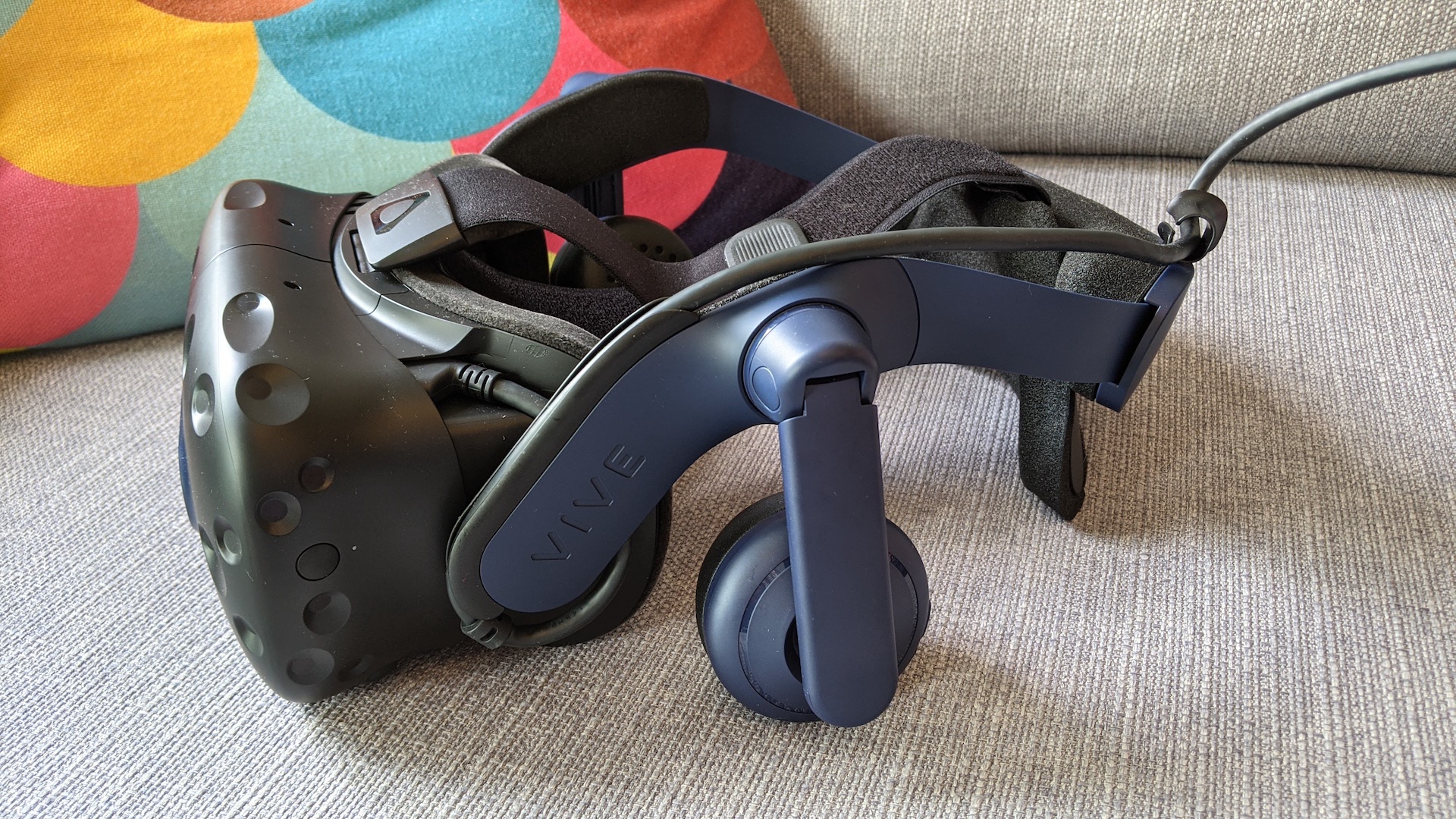
Design
- Incredibly sharp 4896 x 2448 display (2448 x 2448 per eye)
- 120Hz, super smooth refresh rate and wide 120-degree field of view
- Controllers haven't changed much in years
Rather than going for an all-in-one, wireless headset design for the HTC Vive Pro 2, HTC is instead targeting the high-end capabilities of virtual reality that can only be reached by hooking up to a well-spec’d PC.
Minimum:
Processor: Intel Core i5-4590 or AMD FX 8350 (equivalent or better) / Memory: 8GB RAM (or more) | Graphics: Nvidia GeForce GTX1060 or AMD Radeon RX480 (equivalent or better) | OS: Microsoft Windows 8.1 or Windows 10 | Video out: DisplayPort 1.2 (or newer) | USB ports: 1x USB 3.0 (or newer)
Recommended:
Processor: Intel Core i5-4590 or AMD FX 8350 (equivalent or better) / Memory: 8GB RAM (or more) | Graphics: Nvidia GeForce RTX 2060 or AMD Radeon RX 5700 (equivalent or better) | Video out: DisplayPort 1.4 (or newer) | USB ports: 1x USB 3.0 (or newer) | OS: Microsoft Windows 10
And the numbers it is targeting are very impressive. It’s offering a 5K resolution display (2.5k to each eye), and is aiming to maintain a silky-smooth 120Hz refresh rate. That’s a much sharper display than is present with the Oculus Quest 2, with the Quest 2 also only capable of targeting 120Hz refresh rates on selected titles.
It’s not just about resolution with the screen though, but also the quality of the panels in use. The headset is packing a fast-switch LCD with RGB sub-pixels, and IPD-adjustable goggles that support a 120-degree field of view. That’s wide enough to catch action out of the corner of your eye, thanks to a dual-stacked lens design. It’s a very advanced optics system, with the LCD display shrunk compared to previous models, supposedly for improved heat management – though in practice this isn’t quite the case.
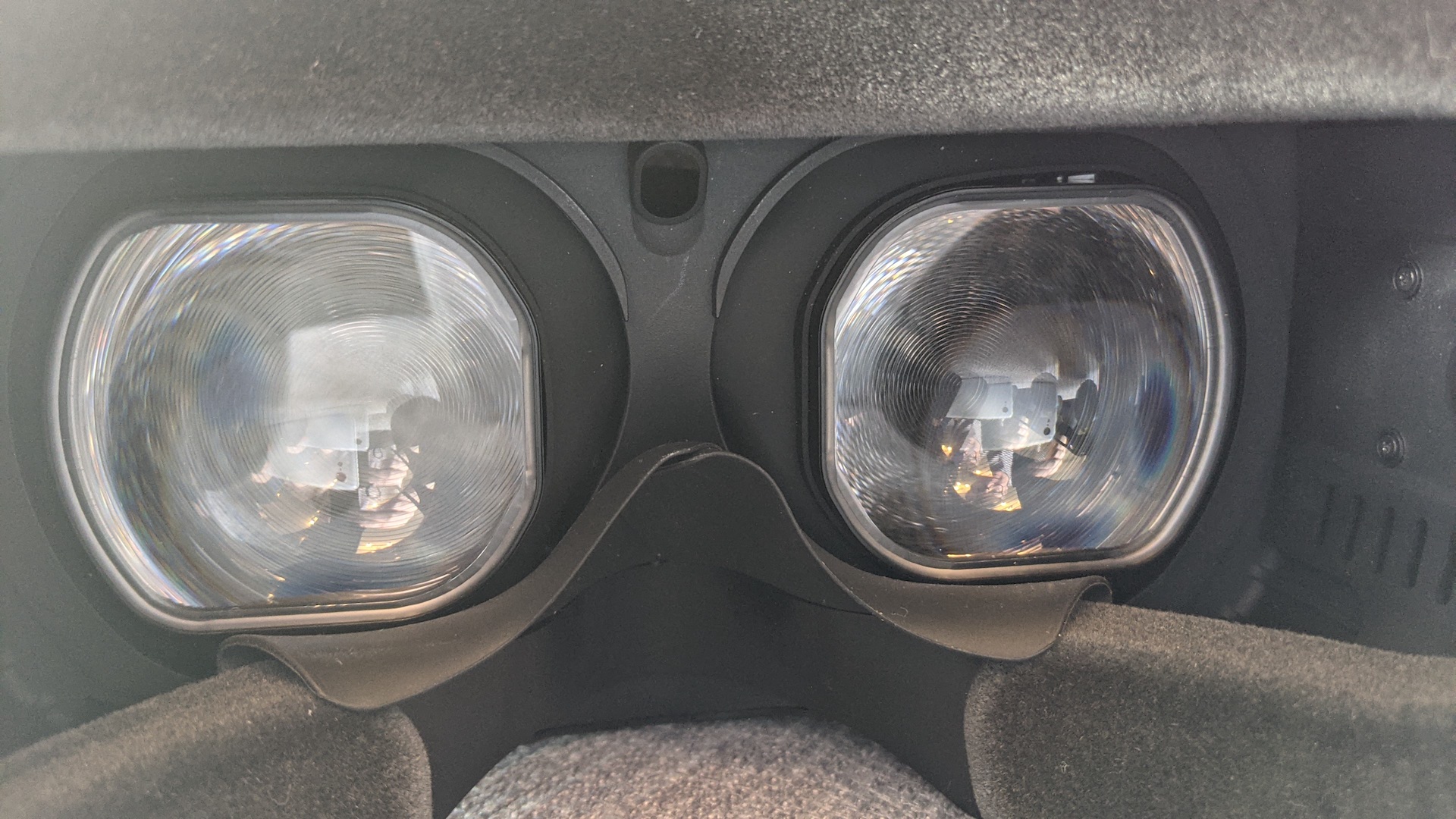
Pushing this many pixels may make your rig rightly quiver at what’s going to be expected of your PC, and HTC is focussing primarily on enthusiast (and business) users here. You’re going to need a powerful machine to get the most out of the Vive Pro 2.
But HTC has done what it can to take the strain off your components as best as possible – it’s worked alongside Nvidia and AMD to make Display Stream Compression optimised for the VR headset. It allows for faster compiling and recompiling of visual data between the PC and headset when crunching down the large assets needed to make the 4K screen shine. DisplayPort 1.2 is still supported too, even with DisplayPort Compression active. HTC’s Vive Wireless adapter will also be supported – though users will not be able to hit the native 4896 x 2448 / 120Hz resolution and frame rate target that the tethered set up delivers.
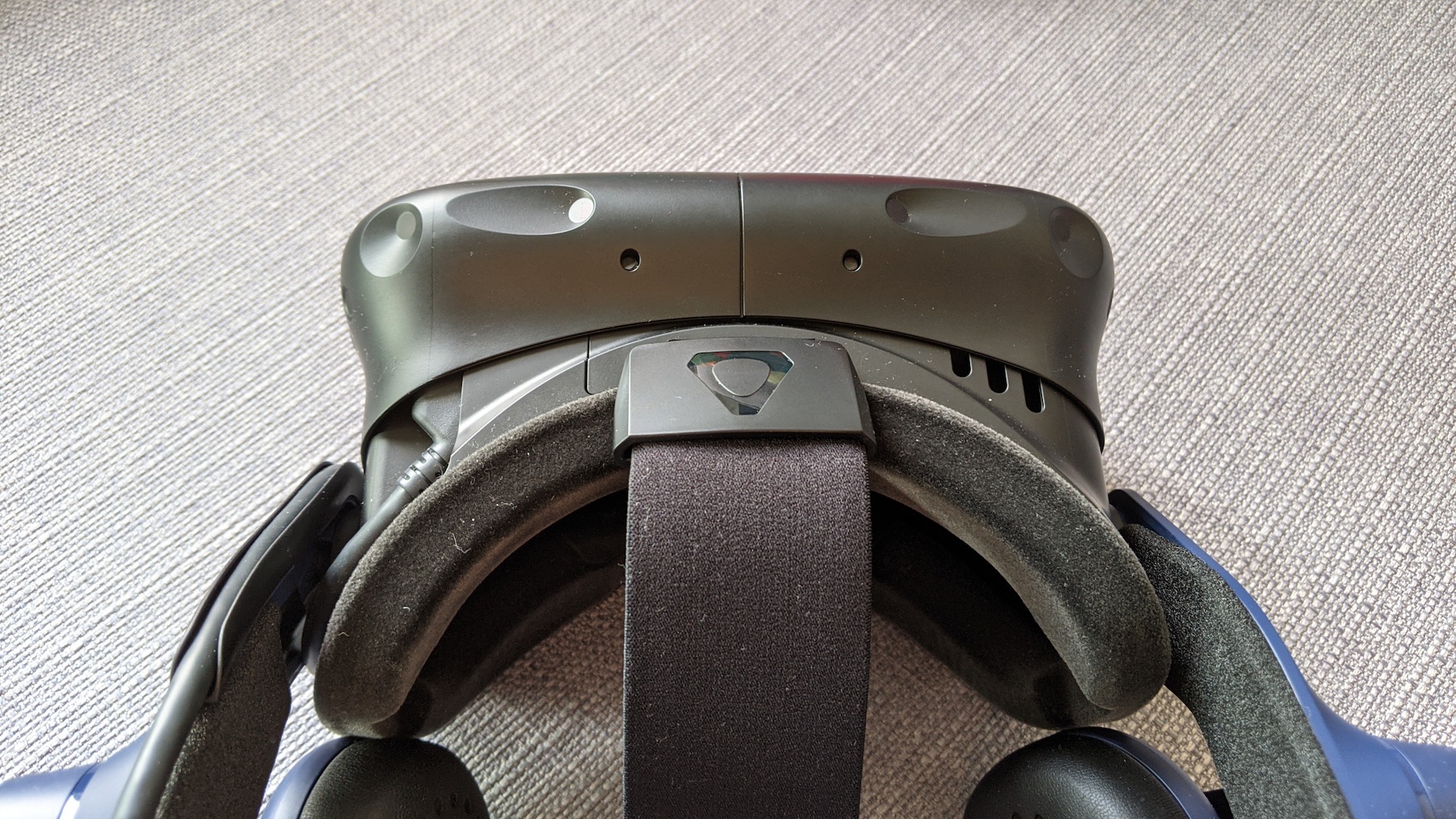
Those opting to purchase the complete HTC Vive Pro 2 package will also receive a pair of cuboid, powered tracking stations, and a pair of wand-style controllers. The controllers are essentially the same design HTC has used now for years – dependable and durable, they have a circular touchpad, trigger and pressure-sensitive grip handles, below a large tracking ring. They track well and are compatible and recognized by almost every VR game you can find on Steam, but they’re starting to feel a little old fashioned in comparison to the Valve Index’s “knuckle” controllers, and the more compact Oculus Touch controllers.
Comfort and compatibility
- Screen generates a lot heat leading to steamy lenses
- Lots of ways to adjust the fit to suit many head sizes
- Remains compatible with all existing HTC Vive accessories
HTC has made some adjustments to its headsets to improve upon the ergonomics for the HTC Vive Pro 2. As well as the fine-tunable IPD slider, it’s ensured that its headstrap is quick to adjust and lock thanks to a dial system, while its facial interface is wide enough to accommodate glasses wearers. Weight is evenly distributed to avoid strain on your neck, but this is still a chunky headset. You very much feel encased in its design – especially once you flip down its over-ear, built-in headphones.
Those 3D spatial sound speakers hover over the user's ears, meaning you still have a sense of what’s going on in their real-world surroundings. But they can be cranked up loud thanks to on-cup volume controls. The audio delivery is another highlight here, with rich and deep bass sounds meaning you won’t necessarily need to bring your own headphones to the party – the audio interface is also Hi-Res certified though, meaning you can hook up audiophile-grade headphones to the headset and appreciate a more richly-detailed sound experience if you want.
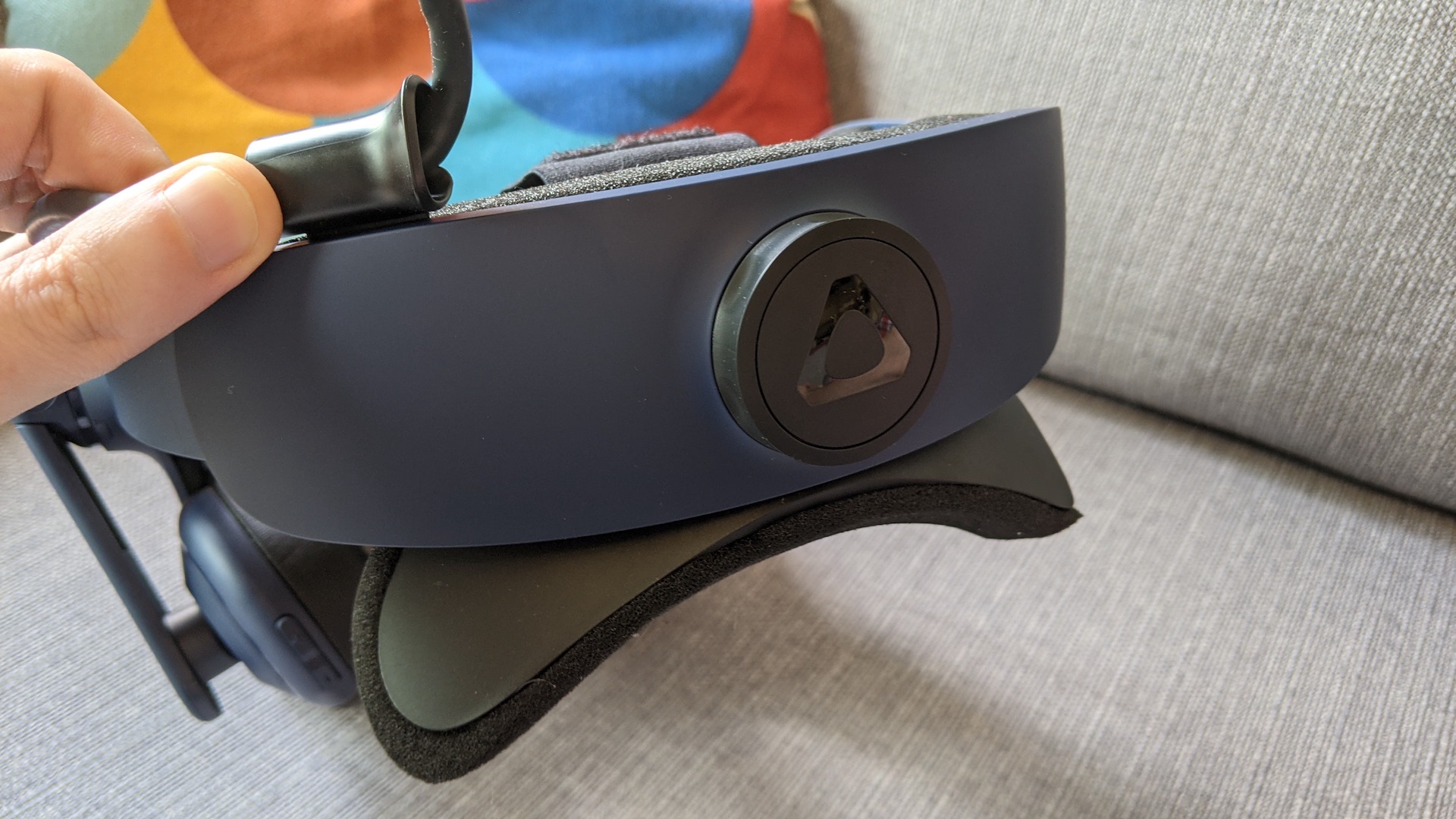
Where the HTC Vive Pro 2 is at its least comfortable is in the amount of heat that its screen generates. With the screen wrapped close to your face, it gets very hot and steamy. We struggled to find a fit that kept the headset tight and secure to our face, and prevented lens fogging at the same time, a problem that was exacerbated by glasses. It’s a problem that will vary from person to person, but better ventilation around the goggles could have prevented the issue altogether – I’d personally accept a little exterior light bleed if it counteracted steamy lenses.
Those looking for an untethered, all-in-one headset from HTC should look towards the newly-revealed HTC Vive Focus 3 – though that’s primarily being targeted at business users. Existing HTC Vive owners can find some solace in the fact that all existing HTC VR accessories will be compatible with the new HTC Vive Pro 2 however, meaning you won’t need to buy additional gear other than the headset if you’re already rocking VIVE Trackers of any generation, the VIVE Facial Tracker, Vive ‘wand’ controllers, or Steam VR accessories such as the Valve Index ‘knuckle’ controllers. Oculus controllers are not compatible.
Set up
- Base station tracking placement can be tricky
- Requires lots of cables and plug sockets
- Optimum play space size won't be possible for everyone
If there’s one thing that may not be quite so accommodating for the budding VR gamer, that’ll be the continued reliance on base stations for tracking with the HTC Vive Pro 2. Along with the tethered connection to the PC, it’s another obstacle to quick, hassle-free VR engagement, meaning you’re going to need to find space to house two small tracking cubes around your play space so that the Vive Pro 2 knows where you are. Along with the cable tether, that’s the trade off to get the highest-possible visual quality from a VR headset at present – though the gap is closing with inside-out tracking systems as seen in use with the Oculus Quest 2.

The HTC Vive Pro 2 connects to your PC using a breakaway Vive Link box. It requires a power outlet, USB 3 connection and DisplayPort connection to your PC. From there, you can plug in the cable running from the headset into the Link Box, giving you a total of about 5m distance to roam from your PC.
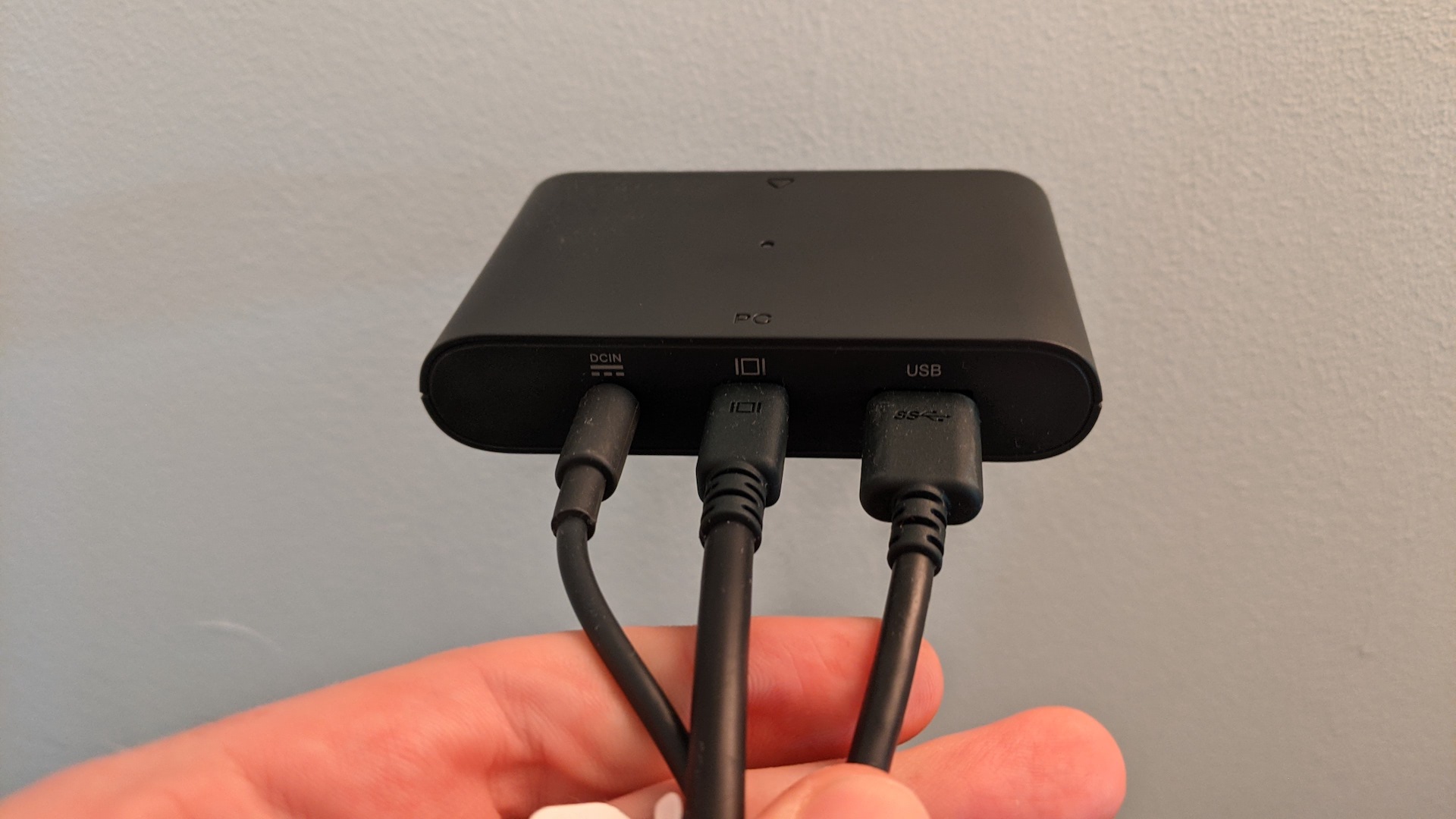
HTC Vive Pro 2 uses Steam VR as its underlying platform (and Valve’s base stations), so if you’ve experience setting up a VR headset through that, you’ll know what to expect. You’ll need to put the base stations high up in opposite corners of your play space – ideally above head height, and angled slightly downwards. Ideally, you’ll have a minimum of 2m x 1.5m for ‘room-scale’ walk-around play, though you can get away with smaller spaces if you’re playing seated instead of just standing.
The Steam VR set up software does a good job of holding your hand through the set-up process, asking you to place the Bluetooth-connected controllers on the floor to establish the ground level and tracing the corners of your digital play space. Note though that it is important to angle those base stations just right – initially, Steam VR thought I was about 3 foot high as I’d not properly established my height. The base stations can be wall mounted or placed on a tripod, but with each needing a power outlet, finding a permanent space for your VR sessions will be best, or you’ll have to go through the set-up rigamarole each time you move the kit.
Performance
- Unparalleled fidelity
- High refresh rate makes for smooth gameplay and reduces motion sickness
- Wide field of view and excellent audio increases immersion
If you can get past some of the comfort and heat issues we experienced with the Vive Pro 2, you’ll be able to enjoy an unparalleled VR experience from a visual standpoint. The high resolution screen and fast refresh rate is jaw-dropping, with an incredible sense of presence and realism able to shine through on the headset. Provided you’ve got the high-end PC to power it, it really is the very best-looking VR headset you can use at home.
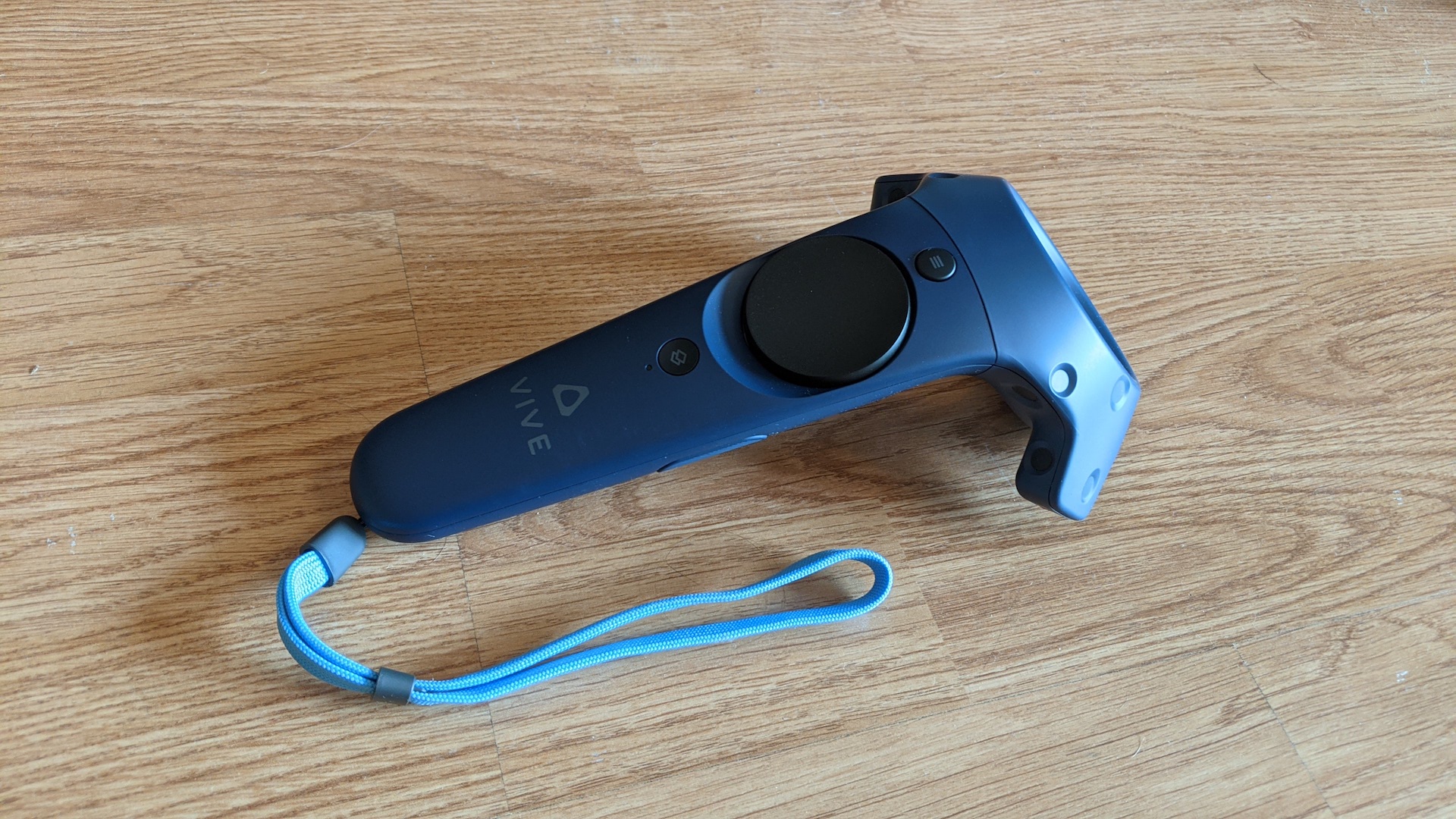
We regularly wax lyrical on the likes of Half-Life Alyx and Lone Echo in VR circles and, as you’d imagine, these sorts of titles enjoy an additional sense of polish, fidelity and atmosphere through the combination of the Valve’s class-leading optics and audio.
But what was even more striking was going back to earlier VR titles, and seeing them benefit from an upscaled resolution. For instance, the environments in Batman Arkham VR appeared far more detailed than remembered, with Wayne Manor, the Bat Cave and the assorted crime scenes oozing with gothic wonder. As anticipated however, it’s hard to go back to HTC’s wand controllers after spending extended time with the wonderfully ergonomic Oculus or Valve Index options. At around 5 hours of play, the battery life of the controllers could be better, too.
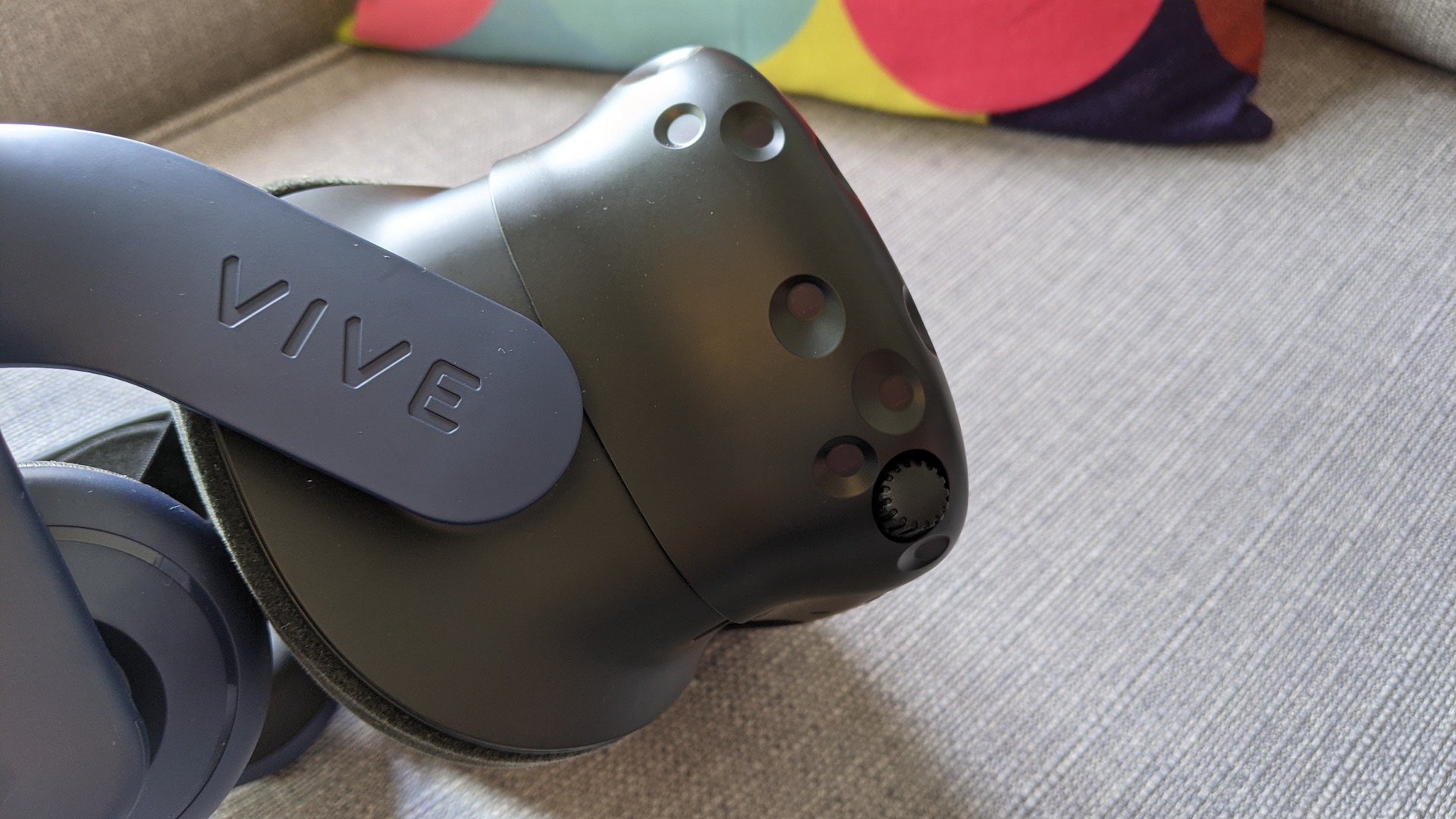
There’s a huge amount of games available to Vive Pro 2 players through the Steam store front, while HTC offers its own store with at Viveport. Half-Life Alyx, Superhot VR, Beat Saber and The Room VR represent just a taste of what’s on offer. It also offers an all you can eat Viveport Infinity subscription, opening up unlimited access to a number of big titles for a monthly fee. Note there are also unofficial workarounds that can be found online to access games pushed through the Oculus storefront too, though neither Oculus owners Facebook nor HTC officially supports them.
Should you buy the HTC Vive Pro 2?
Buy it if...
You want the very best looking VR experience
The HTC Vive Pro is simply the best when it comes to VR screen technology, with such a high pixel density that you can easily lose yourself in the digital worlds created for it.
You have plenty of play space
The Vive Pro 2’s tracking system is excellent - provided you have plenty of room to set up room-scale play in.
You’re already invested in Vive hardware
You can knock a fair chunk of change off the package price by bringing your older Vive controllers and base stations along for the ride with Vive Pro 2.
Don't buy it if...
You want a simple set-up
Setting up base stations is a chore, and there are a lot of cables and plug sockets required to get up and running.
You’re on a tight budget
Between the headset itself and any potential PC hardware needs you might have, the cost of the HTC Vive Pro 2 can be considerable.
You want something portable and lightweight
HTC Vive Pro 2 is a big and serious piece of equipment that can become warm and sweaty against your face. Portable options like the Oculus Quest 2 may represent a better VR entry point for the uninitiated.
- Best VR games: what to play on the HTC Vive Pro 2
Gerald is Editor-in-Chief of iMore.com. Previously he was the Executive Editor for TechRadar, taking care of the site's home cinema, gaming, smart home, entertainment and audio output. He loves gaming, but don't expect him to play with you unless your console is hooked up to a 4K HDR screen and a 7.1 surround system. Before TechRadar, Gerald was Editor of Gizmodo UK. He is also the author of 'Get Technology: Upgrade Your Future', published by Aurum Press.
